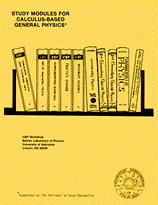Instructional Materials in Physics and Astronomy

Calculus-Based General Physics
Date of this Version
1975
Document Type
Article
Abstract
The members of the solar system -- the Sun, the Moon, and the planets -- have held a strong fascination for mankind since prehistoric times. The motions of these heavenly bodies were thought to have important specific influences on persons' lives -- a belief that is reflected even today in horoscopes and astrological publications. A revolution in man's thinking that occurred about four hundred years ago established the concept of a solar system with planets orbiting about the Sun and moons orbiting about some of the planets. Copernicus, Kepler, Galileo, and Newton were the four scientific leaders chiefly responsible for establishing this new viewpoint. One of its very practical aspects, yet difficult for us earth-bound creatures to grasp, is that the force of gravity gradually diminishes as one recedes from the Earth, in a way beautifully stated by Newton in his universal law of gravitation.
Gravity is a universal force: It acts on every material thing from the smallest nuclear particle to the largest galaxy. It even acts on objects that have zero rest mass, such as photons - the fantastically minute "chunks" in which light comes. One of the most exciting areas of astronomical research today is the "black hole," where the gravitational field may be so immense that not even light can escape!
Newton's law of gravitation is important not only in itself, but also because it serves as a model for the interaction of electric charges, which you will study later. Not only are the force law and the potential-energy function nearly the same, but the concept of a field carries over and becomes even more useful in the calculation of forces between electrically charged particles.


Comments
From Study Modules for Calculus-Based General Physics
Copyright © 1975 CBP Workshop, University of Nebraska–Lincoln.
Reproduction rights granted.